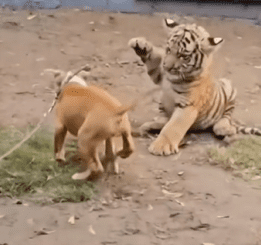In recent years, incidents of wild bulls attacking humans have become a growing concern in many parts of the world, particularly in areas near wildlife reserves, national parks, or regions where wild bulls still roam. Although wild bulls (Bos taurus) are not as inherently dangerous to humans as big cats like tigers or lions, attacks from these animals can still cause serious injuries or even fatalities. This article will explore the causes, risk factors, and preventive measures to reduce incidents of wild bulls attacking humans.

1. Wild Bulls and Their Natural Habitat
Wild bulls, a species of large horned animals belonging to the Bovidae family, have been domesticated for thousands of years for agricultural and livestock purposes. However, some wild or semi-wild bulls still exist in specific regions, especially in mountainous areas or wildlife reserves. These wild herds of bulls are capable of living independently, without much human intervention.
In their natural habitat, wild bulls are typically shy and will avoid humans whenever possible. However, in certain situations, they may become aggressive, particularly when they feel threatened or when protecting their young.

2. Causes of Attacks
Wild bull attacks on humans are generally not premeditated but occur due to specific circumstances that cause the animal to feel threatened or disturbed. Common causes of attacks include:
- Protecting territory and offspring: Like many other animals, wild bulls can become extremely aggressive when they perceive their territory or young to be at risk. A mother bull, for instance, may attack if it feels its calf is being threatened by a human or another animal.
- Sudden encounters with humans: Unforeseen encounters, where the bull is surprised by the presence of humans, can cause panic in the animal. Wild bulls may react defensively by charging or attacking to protect themselves.
- Farming and human interaction: In some cases, wild bulls are found near farming communities or in areas where they may come into closer contact with humans. When humans get too close, particularly through loud noises or sudden movements, bulls may feel provoked and react aggressively.
- Starvation or illness: If a wild bull is suffering from hunger, injury, or illness, it may become more irritable and prone to aggressive behavior. In these cases, the animal may attack if it feels cornered or threatened.
3. Consequences of Bull Attacks

While wild bulls are not typically known to attack humans regularly, when such an attack does occur, the consequences can be severe. Injuries caused by bull attacks often include goring, trampling, or biting. These injuries can lead to serious trauma, broken bones, or even death if not treated promptly.
In some instances, attacks by wild bulls can have significant social and economic consequences, particularly in areas where livestock farming or tourism are major industries. Fear of bull attacks can reduce tourist visits to national parks or wildlife reserves, which in turn affects local economies and communities that rely on the tourism industry.
4. Preventive Measures
To reduce the risk of wild bull attacks, a combination of preventive measures should be implemented. Some of the key strategies include:
- Community education: People living in or near wild bull habitats should be educated about safety measures when encountering these animals. It is important to avoid approaching or disturbing wild bulls, especially during the calving season when mothers are most protective.
- Barriers and safe zones: National parks and wildlife reserves can install fencing or other safety measures to prevent direct contact between humans and wild bulls. Such measures can help reduce the risk of accidental encounters.
- Monitoring and research: Increased research on the behavior of wild bulls can help identify patterns and potential risk factors that lead to aggressive behavior. Monitoring wild herds can also help authorities detect and address potential threats before they escalate.
- Timely intervention: In the event of an attack, quick intervention by emergency services is crucial. Ensuring that medical assistance is available and addressing the situation with the animal swiftly can help mitigate further harm.
5. Conclusion

While wild bulls are not inherently aggressive toward humans, their attacks can be severe when they do occur. Understanding the causes behind these attacks, along with implementing effective preventive measures, is crucial to safeguarding both human lives and the welfare of wild animals. Cooperation between communities, wildlife conservation organizations, and local authorities is necessary to prevent these incidents and to foster a balanced relationship between humans and nature.


